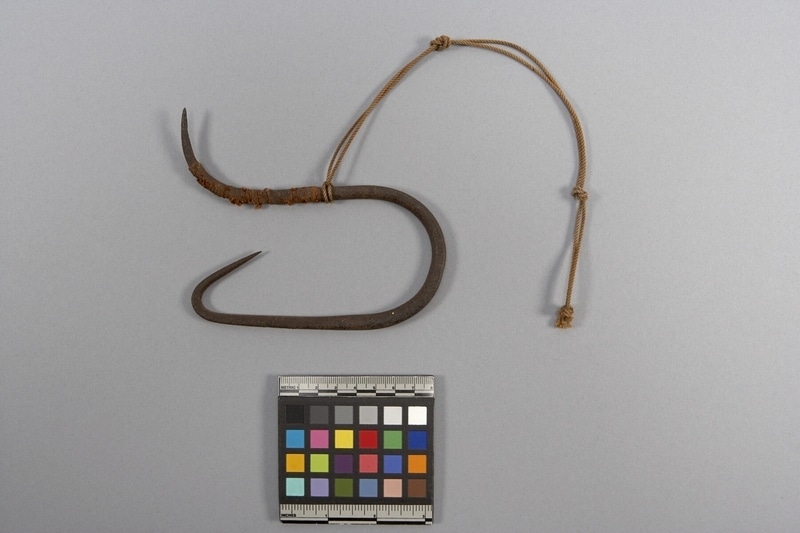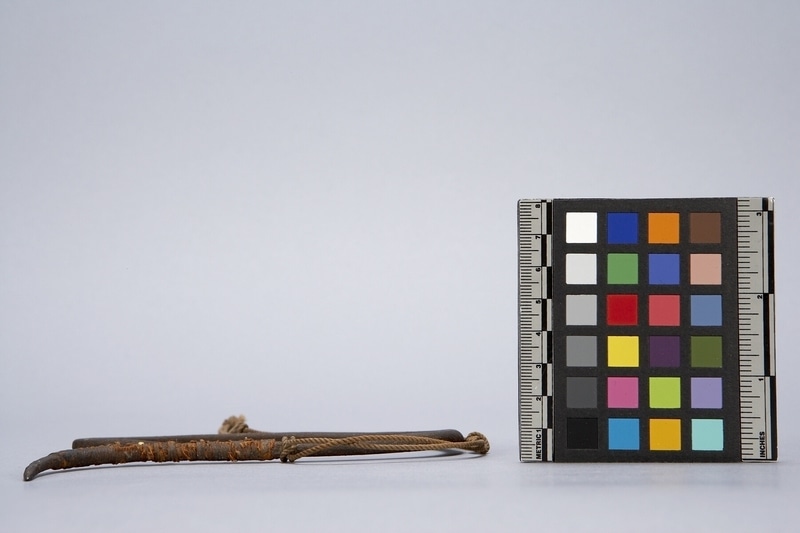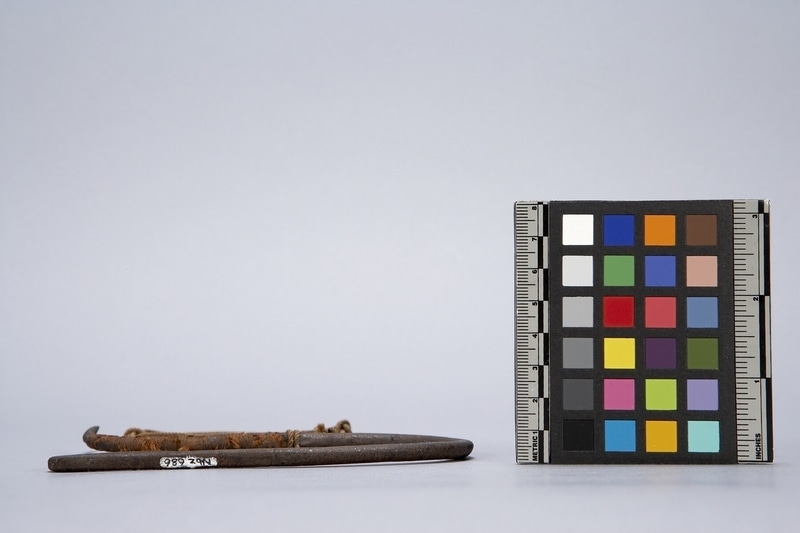Halibut Hook Item Number: Nbz686 from the MOA: University of British Columbia



Description
U-shaped, bent metal hook, one sharp end bent inwards at an angle, the upper end bent outwards. A loop of knotted twine is attached to middle of upper arm; remains of cotton cord are coiled around the front arm.
History Of Use
The collector's notes said: "This hook was traded from Indians on a small island covered with cedar handmade board houses somewhere between Nanaimo and mouth of Jervis Inlet, B.C." There are only a few islands in the area to which this information may refer. They are: Thormanby Island, Lasqueti Island, Texada Island, Nelson Island and Hardy Island. A map showing village sites of the Northern Coast Salish in the Handbook of North American Indians, shows that the smaller Thormanby island had a village site that was known as sxwelap (deep furrow). Village sites are not indicated for the other islands previously mentioned (see Kennedy and Bouchard 1990:442-3).
Specific Techniques
This hook is modeled after the traditional halibut hooks made of steamed and bent wood. Instead of a bone barb, the metal has been bent inwards. They were attached in pairs by string to a pliable twig; weighted with a stone sinker, attached by string to a horizontal rope (Stewart).
Cultural Context
fishing
Item History
- Made in British Columbia, Canada during 1914
- Collected in Jervis Inlet, British Columbia, Canada ? during 1914
- Owned by Anthony A. Kingscote before September 11, 1978
- Received from Anthony A. Kingscote (Donor) on September 11, 1978
What
- Name
- Halibut Hook
- Identification Number
- Nbz686
- Type of Item
- hook
- Material
- iron metal and cotton fibre
- Manufacturing Technique
- hammered, tied and knotted
- Overall
- height 13.7 cm, width 11.4 cm, depth 0.5 cm
Who
- Culture
- Coast Salish: Shishalh ?
- Previous Owner
- Anthony A. Kingscote
- Received from
- Anthony A. Kingscote (Donor)
Where
- Holding Institution
- MOA: University of British Columbia
- Made in
- British Columbia, Canada
- Collected in
- Jervis Inlet, British Columbia, Canada ?
When
- Creation Date
- during 1914
- Collection Date
- during 1914
- Ownership Date
- before September 11, 1978
- Acquisition Date
- on September 11, 1978
Other
- Item Classes
- metalwork
- Condition
- fair
- Current Location
- Case 7
- Accession Number
- 0485/0001